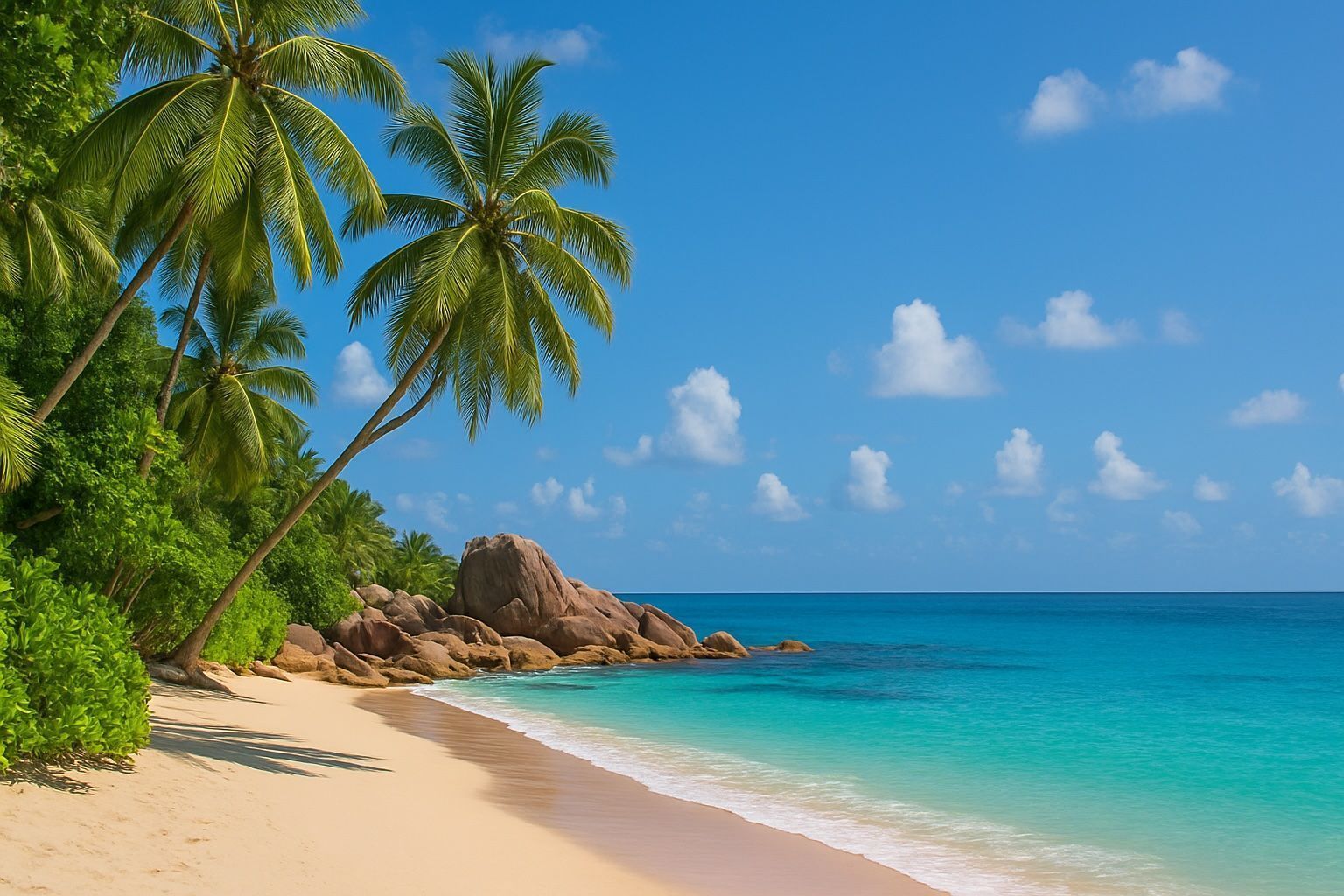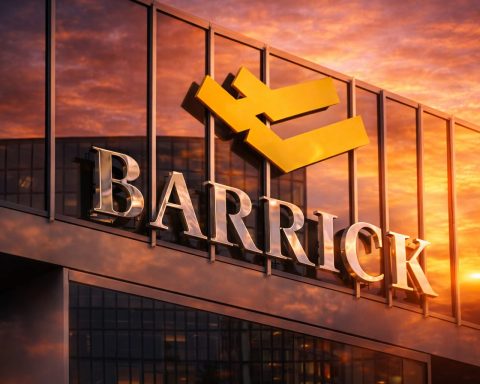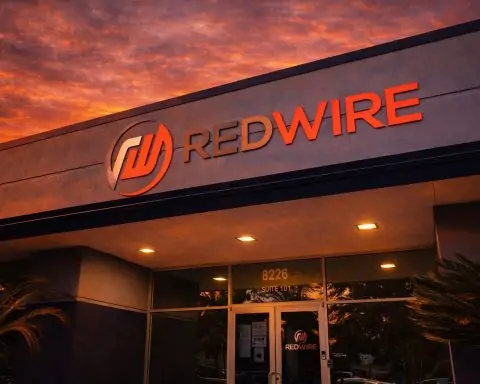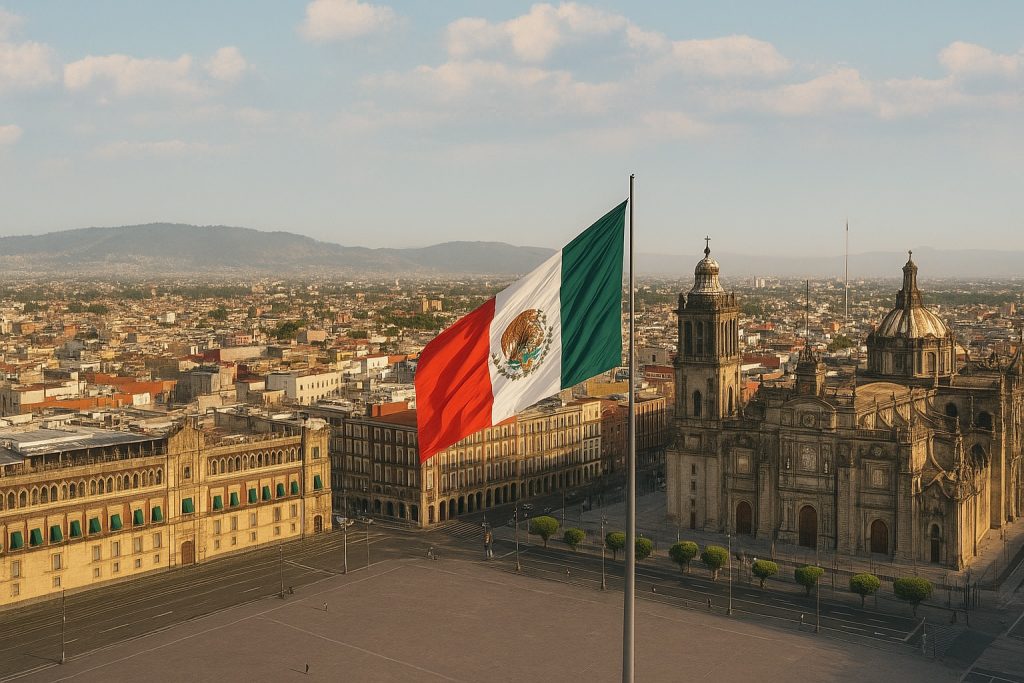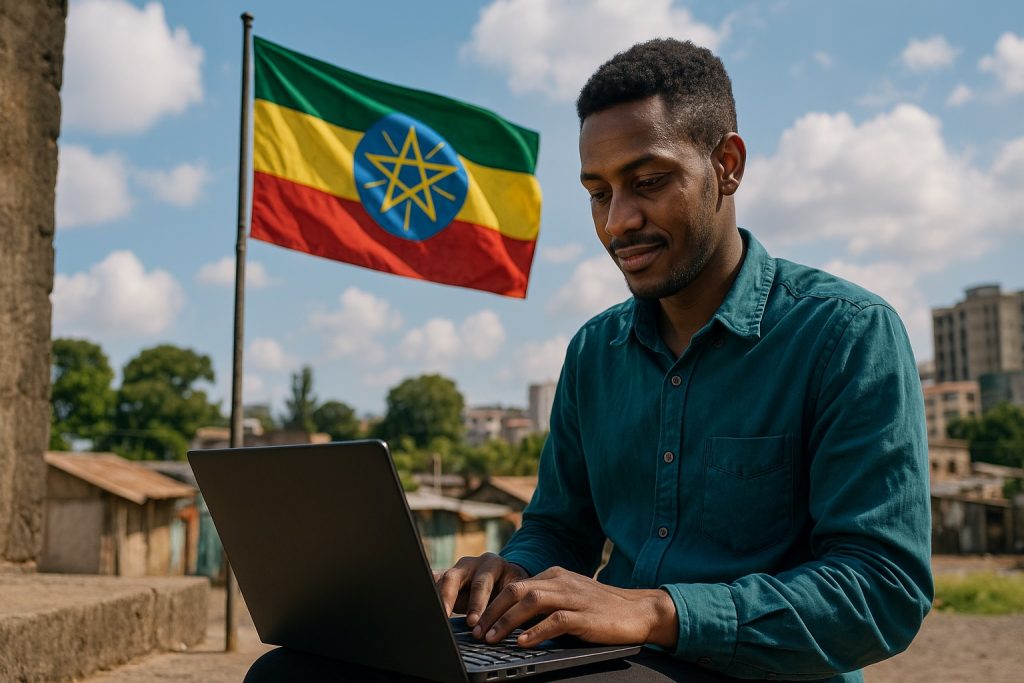- The Seychelles East Africa System (SEAS) became Seychelles’ first major undersea cable, linking the islands to continental Africa in the early 2010s and ending reliance on satellites.
- In August 2021, Intelvision secured support to lease a branch of the 2Africa submarine cable, enabling 600 Gbps of international capacity and added redundancy.
- Cable & Wireless Seychelles (CWS) began a nationwide Fibre-to-the-Home rollout in 2017, aiming to replace all copper lines with fiber by 2020.
- By late 2024, Cable & Wireless Seychelles launched “GigaNet,” Africa’s first 10 Gbps broadband service, using 50G-PON technology.
- International bandwidth available to Seychelles’ ISPs grew from about 18 Gbps in 2020 to 221.7 Gbps by June 2024, more than a 12× increase.
- As of early 2025, about 87.4% of Seychellois were internet users (roughly 115,000 people online) with roughly 220,000 mobile subscriptions—167% of the population.
- In July 2020, Cable & Wireless Seychelles launched 5G service with Huawei, initially live in parts of Mahé (Victoria, Beau Vallon, the airport) and expanding to the main islands.
- The market features a quad-play environment with fixed fiber, mobile broadband, digital TV, and voice, dominated by Cable & Wireless Seychelles and Airtel Seychelles, with Intelvision entering.
- The government’s universal access plan includes connecting all schools and government offices to broadband and achieving 100% mobile coverage of inhabited territory.
- As of 2025, Starlink has not been licensed in Seychelles, though it could deliver 50–200 Mbps with 20–40 ms latency; equipment costs around $600 and monthly service about $150–$200, and is not yet available.
Internet Infrastructure: From Subsea Fiber to Nationwide 5G
Seychelles may be a remote Indian Ocean archipelago, but it boasts surprisingly advanced internet infrastructure. The country’s connectivity journey leapt forward with the installation of submarine fiber-optic cables. The first major undersea cable, the Seychelles East Africa System (SEAS), connected the islands to continental Africa (likely landing in Tanzania) in the early 2010s, ending reliance on slow, costly satellites. In August 2021, a second submarine link was secured when Intelvision (a local telecom operator) obtained support to lease a branch of the massive 2Africa submarine cable being built by Vodafone [1] [2]. This new cable, offering 600 Gbps of international capacity, complements SEAS to boost redundancy and lower bandwidth costs [3]. With these cables as a backbone, Seychelles has greatly expanded its domestic fiber network across the main islands.
On land, fiber-optic broadband has become the standard. Cable & Wireless Seychelles (CWS) – the oldest telecom operator – began a nationwide Fibre-to-the-Home (FTTH) rollout in 2017, aiming to replace all copper lines with fiber by 2020 [4] [5]. Today, fiber connectivity reaches homes and businesses on Mahé (the largest island) and the populated inner islands like Praslin and La Digue. In fact, by late 2024 CWS launched “GigaNet” service as Africa’s first 10 Gbps broadband offering, using cutting-edge 50G-PON technology [6]. This milestone put the tiny Seychelles at the forefront of high-speed broadband, with Huawei as a key partner in upgrading the all-optical network [7] [8]. Such infrastructure can seamlessly scale from older 100 Mbps plans to new multi-gigabit speeds, future-proofing the islands’ connectivity.
Meanwhile, mobile networks blanket the population. Two operators dominate mobile services: CWS and Airtel Seychelles. 4G LTE coverage is essentially universal – estimated 100% coverage by 2025 [9] – and provides mobile broadband across all inhabited areas. In July 2020, CWS went further by launching 5G service (in partnership with Huawei), making Seychelles one of the first African countries with 5G [10]. Initially the 5G signal was live only in parts of Mahé (Victoria, Beau Vallon, the airport and a few zones) [11], but it’s expanding to cover all main islands. Airtel, for its part, offers 2G/3G/4G and is upgrading its network, though it has not yet rolled out 5G commercially as of 2025. Thanks to these developments, Seychelles has a robust “quad-play” telecom environment – fast fixed fiber, widespread mobile broadband, digital TV, and voice services – rivaling much larger nations.
Coverage and Quality: How Connected Are the Islands?
For a country of just 99,000 people spread over many islands, Seychelles enjoys exceptionally high internet penetration and coverage. Internet access is effectively available to all urban and populated areas. Nearly 87.4% of Seychellois were internet users at the start of 2025 (about 115,000 individuals online) [12] – one of the highest rates in Africa. Mobile phone subscriptions outnumber people (about 220k mobile subscriptions, 167% of population) as many users carry dual SIMs or separate data devices [13]. The main populated islands (Mahé, Praslin, La Digue) are well-served by fiber-optic lines and cellular towers, so both fixed and mobile broadband reach almost every household and business in these areas. Even many guesthouses, cafes, and public spaces offer Wi-Fi, leveraging the national fiber backbone.
Connection quality has improved dramatically in recent years. Average fixed broadband speeds have risen into the tens of Mbps, and high-end users can get gigabit-per-second service. As of mid-2024, the international bandwidth available to Seychelles’ ISPs had exploded from just ~18 Gbps in 2020 to 221.7 Gbps by June 2024 [14] – a more than 12× increase – thanks to new subsea capacity. This has enabled ISPs to offer faster packages and relax data caps. The Communications Authority reported a 43% year-over-year jump in data consumption in 2024, crediting “faster speeds and unlimited packages” now available locally [15] [16]. In other words, users are streaming and downloading far more now that networks can handle it. Latency (delay) on the fiber routes to Africa/Europe is reasonably low, and local networks have enough redundancy (with two undersea cables) to avoid congestion under normal circumstances.
That said, quality can still vary. In the capital Victoria and tourist areas, users describe Wi-Fi and 4G that are “a lot better than it used to be” – you can even get fiber to the home – “but it is still expensive” according to one local comment [17]. In more remote outer islands (the sparsely inhabited ones far from Mahé), connectivity may be limited or rely on older satellite links. However, for the vast majority living on the three main islands, internet access is comparable to developed countries in coverage. The government has also pushed initiatives like connecting all schools and government offices to broadband, and ensuring 4G signal reaches secondary islands where people live or tourists visit. Overall, Seychelles has transformed its internet quality from a luxury a decade ago into an essential utility today, with generally reliable, fast connections – as long as undersea cables remain operational.
ISPs and Packages: What Internet Costs in Seychelles
Despite its small size, Seychelles has a competitive ISP market with a handful of providers offering various services. Here’s a look at the major players and their internet offerings:
| Provider | Networks & Services | Notable Offerings | Price Examples |
|---|---|---|---|
| Cable & Wireless Seychelles (CWS) – the former incumbent (est. 1893) and leading quad-play operator | – Fixed: Extensive FTTH fiber network (nationwide) – Mobile: 2G/3G/4G and first to launch 5G (since 2020) [18] – Others: Fixed wireless, IPTV, telephone | – 10 Gbps fiber broadband service (pioneering in Africa) [19] – Range of home fiber plans (100 Mbps, 1 Gbps, etc.) – Unlimited 5G Wirelessbroadband plans (for home/office) with various speed tiers – Mobile data bundles and postpaid plans | – Fiber: high-end 10 Gbps plan (enterprise-level) – pricing on inquiry (premium) – 5G Home Wireless: e.g. “5G-100”plan with 100 GB at 1.2 Gbps + unlimited throttled data for SCR 4,950 (~US$350) monthly [20](ex VAT) – Other unlimited wireless plans from ~SCR 899–1599 (≈$65–$115) for lower speeds [21]. |
| Intelvision – a local competitor in pay-TV and broadband (entered telecom in 2004) | – Fixed: Hybrid Fiber-Coaxnetwork and growing fiberfootprint for broadband and TV – Mobile: (Planned) Entering mobile 4G/5G market using new submarine capacity [22] – Others: VoIP, IPTV | – Broadband packages up to 1 Gbps download on fiber/coax [23](introduced Seychelles’ first 1 Gbps plan) – Mix of capped plans (e.g. 50 GB, 100 GB) and unlimited options; prepaid plans available [24] – Upcoming mobile serviceswith 4G/5G to cover Mahé and inner islands (leveraging 2Africa cable) [25] | – Home broadband: e.g. 20 Mbps plan for around SCR 800 ($60) monthly (with data cap), higher tiers progressively more<br>- 1 Gbps fiber plan (introduced 2023) – pricing not public, likely in high SCR thousands<br>- Prepaid data top-ups: e.g. 1 GB for SCR 300 ($22) [26](older promo) – aimed at casual users. (Pricing is approximate; Intelvision’s new cable may allow price cuts.) |
| Airtel Seychelles – part of Bharti Airtel (India), second mobile operator (since 1998) | – Mobile: 2G/3G/4G mobile broadband network covering nearly 100% population – Fixed: Some wireless broadband products (4G LTE routers for home); no extensive fiber of its own – Others: Airtel Money (mobile payments) | – Mobile data bundles (daily, weekly, monthly packs for phone users) – Home Wireless: 4G LTE routers with data plans for households (an alternative where fiber isn’t installed) – International roaming and business solutions | – Mobile data: e.g. 12 GB pack + unlimited calls/SMS for SCR 571($40) [27] (prepaid combo)<br>- Home 4G internet: router + 100 GB/month plan for around SCR 1,000–1,500 ($75–$110) – varies by speed/usage – Pay-as-you-go data: around SCR 25 (~$1.80) per 1 GB on larger bundles (cheaper on promotions). |
CWS is the dominant provider for both fixed and mobile, but Intelvision’s entry with a new submarine cable and planned mobile launch is injecting competition. Airtel focuses on mobile and keeps data prices in check to compete for smartphone users. A fourth provider, Coco de Mer (a small ISP), and some satellite-based niche providers also exist, but the big three above command most of the market.
In general, internet in Seychelles is high-quality but expensive relative to global averages. Unlimited home broadband plans typically cost on the order of $50–$100+ per month, which is a hefty portion of average income. For example, CWS’s basic unlimited wireless plan (via 5G) costs around SCR 899 (~$65) [28], while premium plans with higher speeds run into the hundreds of dollars. Mobile data historically had strict caps, but prices have been slowly dropping as capacity grows. The introduction of “unlimited” data packages in the past couple of years – albeit often with Fair Use Policy throttling – was a game changer, fueling much higher internet usage [29] [30]. Still, customers often complain that to get truly fast speeds or generous data, one must pay a small fortune. The small market size and lack of scale mean prices in Seychelles remain above those in big countries. The government, via the Seychelles Communications Regulatory Authority (SCRA), monitors prices and has encouraged competition (like facilitating Intelvision’s cable deal) to drive costs down over time [31] [32].
Government Policies and Digital Strategy
The Seychellois government recognizes that quality internet is critical for the islands’ development – not just for the tourism industry but also for diversifying the economy (e.g. finance, ICT) and improving public services. There isn’t a single public “national broadband plan” document readily available, but a series of policies and initiatives guide the sector:
- Liberalization and Competition: Seychelles opened its telecom sector years ago, breaking CWS’s monopoly by licensing Airtel and Intelvision. The SCRA (regulator) continues to issue licenses and encourage new services. For instance, in 2021 the government supported Intelvision’s partnership with Vodafone/IFC to bring the 2Africa cable [33] [34], explicitly to “increase competition for fixed broadband and mobile data services” and lower prices [35] [36]. The government’s strategy is to use competition (rather than price controls) to improve access and affordability.
- Universal Access: Given the high GDP per capita and small population, Seychelles aims to provide first-world connectivity to all its citizens. The government has funded programs to connect all schools to the internet, set up community access centers, and extend mobile coverage to 100% of inhabited territory. According to 2025 estimates, virtually 100% of the population lives under 3G/4G coverage [37]. Even sparsely populated islands now have at least basic voice/SMS and some data coverage (via 4G or microwave links), so that no communities are completely offline. Officials have also introduced SMS-based emergency alert systems for disasters [38], leveraging the near-universal mobile reach.
- Digital Government and Services: Seychelles is pursuing a digital government agenda, which relies on solid internet infrastructure. Services like online business registration, e-health records, e-learning for remote students, and digital ID are being rolled out. The government’s Department of ICT has driven upgrades in government networks and even local data center projects (e.g. in 2023 Airtel and Ericsson built a data center in Seychelles to host local cloud services). All this is underpinned by a national commitment to improve broadband speeds and reduce costs so that businesses and citizens can take full advantage.
- Regulatory Stance on New Technologies: The government faces a balancing act with disruptive tech like satellite internet (e.g. Starlink) – which could instantly connect remote islands and lower prices – versus protecting the investments of local ISPs. So far, authorities have been cautious (see next section on satellite internet), prioritizing a regulated, incremental improvement of ground networks. However, Seychelles has generally been tech-friendly, being an early African adopter of 5G and supportive of fiber deployment through public-private partnership. The leadership often speaks about making Seychelles a “knowledge-based society” and a hub for ICT in the region, aligning with the National Development Strategy that emphasizes digital transformation.
In summary, government policy in Seychelles is geared toward ubiquitous, fast internet access as a public good, achieved by promoting competition and investing in infrastructure, while carefully managing any threats (commercial or security-related) that rapid tech changes bring. The results are evident in the high internet penetration and continual upgrades in the country’s networks.
Challenges: High Costs, Remote Islands, and Cable Risks
Despite the progress, Seychelles faces a unique set of challenges in ensuring internet access is affordable, reliable, and equitable:
- High Costs and Affordability: Internet service in Seychelles is expensive for both providers and consumers. The small population means operators have a tiny customer base over which to spread infrastructure costs. Almost all equipment (from fiber optics to routers) has to be imported. Bandwidth purchased via undersea cables used to cost a premium (though the new cable is helping). As a result, prices for end users remain high – many households pay over SCR 1,000 ($75) per month for internet, a significant chunk of income. While unlimited plans exist now, they often come with fair usage limits or throttling, and true high-speed unlimited access (like the 10 Gbps or 5G premium plans) are unaffordable except to businesses or wealthy users [39]. Bridging the affordability gap so that all Seychellois can use the internet freely is an ongoing challenge.
- Geographical Difficulties: Seychelles consists of 115 islands scattered across the Indian Ocean, of which only a few are inhabited in strength. Providing connectivity to outer islands and far-flung atolls is very challenging. The main islands (within the inner cluster) are close enough (e.g. Mahé–Praslin ~45 km) that they’re linked via microwave relays or small subsea cables, but islands further away rely on satellite links. For example, remote island communities, scientific stations, or resorts on private islands often have to use VSAT satellite internet which can be slow and costly. Even within larger islands, the mountainous terrain can make it difficult to lay cables or get wireless signals into every valley – though operators have largely overcome this with creative solutions. The government has to decide how to economically serve tiny island outposts (with perhaps just a few dozen people) – a classic last-mile problem, magnified by ocean distances.
- Undersea Cable Dependency and Vulnerability: International connectivity for Seychelles is entirely dependent on undersea fiber cables running along the ocean floor. This introduces two concerns: fragility and capacity constraints. Cables can be accidentally cut by fishing trawler nets, ship anchors, or natural events (earthquakes, undersea landslides). If the SEAS cable were to break (as has happened to cables elsewhere in Africa [40] [41]), Seychelles could suffer a major internet outage, since satellite backup would only handle a fraction of traffic. The new 2Africa branch cable adds redundancy – so there are at least two routes now, reducing the risk of total blackout. However, both cables likely land on the same island (Mahé) and run through similar ocean regions, meaning a single catastrophic event (or sabotage) could still sever connectivity. The government and operators must maintain contingency plans (such as emergency satellite bandwidth leases) for such scenarios. Additionally, while current capacity is ample after the upgrades, rapid growth in usage means constant investment is needed to expand subsea bandwidth in the future.
- Small Market and Limited Skills: Being a tiny market, Seychelles faces higher unit costs for everything and often relies on foreign partners for technology and expertise. The telecom sector must import skilled engineers or send locals for training on new systems (e.g. Huawei provides a lot of the equipment and training for CWS’s network [42]). This dependency can be a challenge when it comes to maintaining cutting-edge networks locally. The small size also means less competition than in larger markets – only two mobile players, effectively two fixed network providers – which can lead to complacency or collusion if not well-regulated. Thus, the SCRA must stay vigilant to ensure consumers get fair deals and quality service.
Looking ahead, Seychelles will need to continue tackling these challenges by diversifying its connectivity (e.g. maybe adding a third undersea cable or integrating satellite services), encouraging innovation that lowers costs, and possibly subsidizing connectivity for remote areas. The high-income status of the country provides resources to address these issues – for instance, investing some of the tourism revenue into digital infrastructure as a long-term development goal.
Satellite Internet – Starlink’s Promise vs. Reality
One potential game-changer for internet access in Seychelles, especially for the remote islands, is satellite broadband – in particular, Elon Musk’s Starlink network of low-earth orbit satellites. Starlink promises high-speed, low-latency internet virtually anywhere on the globe by beaming data from space. In theory, a Starlink user terminal (“dish”) on an outer Seychelles island or even a boat in Seychellois waters could connect to the internet at decent speeds without any undersea cable or cell tower [43]. This could greatly benefit locations that today have no fiber or reliable mobile signal.
However, as of 2025 Starlink is not officially available in Seychelles. The service has launched in around 20 African countries (and planned in many more) [44] [45], including some in the region like Mozambique and Kenya, but it has not been licensed domestically. The holdup appears to be regulatory – the Seychelles government has not yet granted Starlink (or any LEO satellite provider) permission to operate. One reason, as industry chatter suggests, is that the authorities are protective of local ISPs: allowing Starlink could undermine CWS, Airtel, and Intelvision by letting a foreign service siphon off customers (and revenue out of the country) [46]. The government likely wants to ensure any satellite operator complies with local laws, contributes taxes, and perhaps partners with a local company rather than directly competing.
Technically though, Starlink’s coverage already includes Seychelles’s skies. The constellation of hundreds of satellites orbits the equator and can beam internet to the region – the only barrier is the lack of a licensed ground station or landing rights in Seychelles. A few intrepid individuals or businesses could theoretically use Starlink Roam (a portable global service plan) with equipment brought from abroad, but doing so would be unofficial and potentially illegal. (In some countries, regulators have even confiscated Starlink dishes imported without permission.) For now, the vast majority of Seychellois have never used Starlink, and it “won’t be [available] anytime soon” according to local commentary [47]. The government seems content that the combination of fiber and 4G/5G is meeting most needs, and is taking a wait-and-see approach on satellite broadband.
Aside from Starlink, other satellite options exist but are either legacy or specialized. Before fiber, Seychelles relied on GEO satellites for internet – very slow (dial-up era speeds) and high-latency (600 ms+ delays). Those are now just backup. There’s also O3b (Other 3 Billion), a MEO satellite network that has served some islands with moderate ~150 ms latency; it’s unclear if Seychelles’ telcos still use O3b since fiber came. OneWeb, another LEO constellation, is partnering with telcos in Africa and could be a candidate to serve Seychelles in the future via a local partner. In fact, Airtel Africa (which includes Airtel Seychelles) announced a deal in 2023 to resell Starlink service in its markets [48]. This hints that Airtel Seychelles might eventually offer Starlink-based packages to customers in remote areas, which would satisfy regulatory concerns by keeping it under a local telecom’s umbrella.
For consumers, satellite internet like Starlink offers a mixed bag:
- Speed: Starlink can deliver between ~50 Mbps and 200+ Mbps to a single user, which is comparable to a mid-tier fiber or 4G plan. It also has relatively low latency (~20–40 ms), so things like video calls and online gaming are feasible [49]. This is a massive improvement over older satellite links. However, Starlink’s speeds can fluctuate, and in congested periods they might drop to a few dozen Mbps [50] – still usable for most tasks.
- Cost: Using Starlink in Seychelles (if allowed) would be quite costly for individuals. The equipment is around $600and the subscription about $150–$200 per month [51] (for the Roam plan or a future regional plan). This is more expensive than many existing local internet plans (e.g. the basic unlimited from CWS ~$65). Businesses or government might afford it for remote sites, but average households might not find it worth the price, unless local ISP prices stay high and they desperately need unlimited data.
- Reliability: Starlink, while generally reliable, can be affected by heavy rain (rainfade on high-frequency signals) and occasional network outages. For example, satellite and ground station issues have caused Starlink outages observed in Africa in 2024 [52]. On a clear day it should work consistently, and it has the advantage of independence from undersea cable cuts or local power outages (if one has a generator). So it could be a vital backup in cyclones or cable breaks. But it’s not infallible either – it requires power and a clear view of the sky, and service interruptions can happen as the satellites switch.
- Coverage: The obvious selling point is that anywhere in Seychelles, even a tiny coral isle or a ship at sea, could get internet if they have Starlink. This is great for covering the last gaps – e.g. an eco-lodge on an outer island could offer Wi-Fi via Starlink, whereas laying fiber or maintaining a microwave link there would be impractical. It essentially solves the geographic challenge at one stroke.
In summary, satellite internet (especially LEO constellations) holds great promise for Seychelles’ connectivity gaps, but regulatory and cost factors have delayed its integration. The “satellite showdown” may come in a few years: if Starlink (or a competitor) gets licensed, it could introduce a new wave of competition – forcing down prices and reaching new areas, but also pressuring local ISPs. Until then, Seychelles continues to rely on its impressive ground infrastructure, using satellites only as a secondary resort.
Satellite vs. Terrestrial Internet: A Head-to-Head Comparison
To better understand where satellite internet might fit in, it’s useful to compare it with Seychelles’ terrestrial (fiber and mobile) networks on key aspects:
| Aspect | Terrestrial Internet (Fiber/Mobile in Seychelles) | Satellite Internet (LEO – e.g. Starlink) |
|---|---|---|
| Speed | High: Fiber plans up to 10 Gbpsavailable [53] (common home plans in tens or hundreds of Mbps). Mobile 4G/5G offers up to ~1 Gbps under ideal conditions (e.g. CWS 5G peaks ~1.2 Gbps) [54]. | Moderate-High: Typically 50–200 Mbps per user on Starlink. Speeds can vary with network load (Starlink Roam users see ~5–50 Mbps) [55]. Newer satellite tech (Starlink “V2” satellites, etc.) may increase speeds further. |
| Latency | Low: On-island latency is negligible; international latency ~50–100 ms over fiber routes. Good for video calls, gaming, realtime cloud apps. | Low: ~20–50 ms typical round-trip via LEO satellites [56] – nearly as good as undersea fiber. (Far lower latency than old GEO sats which had 600+ ms delays). Starlink can support video calls and interactive apps with minimal lag. |
| Reliability | Generally Stable: Fiber and mobile networks deliver consistent service; vulnerabilities:outages can occur if a submarine cable is cut or during local power/network failures. Multiple fiber paths and backup power mitigate this, but a major cable break could disrupt internet for days. | Good, But Weather-Dependent: LEO satellites provide coverage even if undersea cables fail (a plus for redundancy). Signal can be disrupted by heavy rain or if the dish view is obstructed. Also requires on-site power. Starlink’s network had occasional brief outages globally as it scales up, but overall uptime is high. |
| Cost to User | Tiered, relatively high: Prices range from ~$50 for basic plans to $300+ for top-tier plans in Seychelles. Unlimited fiber/5G plans are costly (e.g. ~$350 for premium 5G) [57]. Mobile data without an unlimited plan can be very expensive per GB. Operators often bundle unlimited local calls/SMS with internet plans to add value. | High upfront, high monthly: Starlink kit ~$599 and service ~$150–200 per month [58]. No usage caps (truly unlimited data), which for heavy users might justify the cost. But for average users, terrestrial options (if available) are currently cheaper in Seychelles. |
| Coverage | Localized: Excellent coverage on main islands – nearly 100% 4G population coverage [59], extensive fiber in towns. However, remote outer islands and open ocean have no coverage (beyond basic sat-phone service or very limited VSAT in some spots). Coverage depends on infrastructure deployment, which is costly for small or distant islands. | Global: Every corner of Seychelles (land or sea) is under the satellite footprint. Coverage is not dependent on local infrastructure – if you can see the sky, you can connect. This makes it ideal for ships, isolated islands, or as a quick deploy solution after disasters. Regulatory approval is needed locally – as of 2025 Starlink not yet authorized in Seychelles – but technically the coverage is available [60]. |
As the comparison shows, terrestrial broadband wins in raw speed and currently in cost for those in coverage, while satellite shines in reach and independence. In practice, the two can be complementary: Seychelles can use fiber and 5G for the densely populated areas, and leverage satellite for the far-flung spots and as backup. It’s likely that in the near future, a hybrid approach will emerge – for example, a resort island might use a fiber backhaul if available and a Starlink unit as failover, or vice versa. The competition may also spur local ISPs to offer better value; for instance, if Starlink were authorized and priced reasonably, CWS and others would need to respond by either partnering or cutting prices to retain customers. From the user’s perspective, having multiple options (fiber, mobile, or satellite) is ideal, ensuring that no matter where you are in Seychelles – be it Victoria downtown or an outer atoll – you can get online one way or another.
Conclusion: An Online Paradise in the Making
Seychelles, known worldwide for its white-sand beaches and crystal-clear waters, is rapidly becoming notable for something else: fast, modern internet connectivity in the heart of the Indian Ocean. In a little over a decade, the nation has upgraded from a single slow satellite link to a thriving multi-network environment – featuring submarine fiber pipes, island-wide fiber optics to homes, 4G and 5G mobile broadband, and the looming prospect of satellite internet services. The government’s vision to build a digital paradise is well underway, evidenced by high internet penetration and ambitious projects like the 10 Gbps broadband rollout [61] that put Africa’s smallest nation on the cutting edge.
Internet access in Seychelles still has room to improve in affordability and reach. Many consumers eagerly await further price drops and the extension of top-tier service beyond the main islands. Challenges like undersea cable dependency and the high cost of island logistics cannot be ignored. Yet, the trajectory is overwhelmingly positive. With a proactive regulatory stance, new competitors entering, and technology like Starlink on the horizon, Seychellois residents and businesses can expect better deals and even more reliable connectivity in the coming years.
In the end, what’s perhaps most remarkable is that a country of 115 islands – once considered too remote for modern communications – is now a leader in African broadband. From fiber in every neighborhood to potential Wi-Fi on remote atolls, Seychelles is ensuring that its slice of paradise is not just reachable by plane or boat, but also virtually connected to the world at blazing speed. The next time you’re enjoying a sunset on Mahé or Praslin, you just might be able to livestream it in 4K – and that is a development few could have imagined just a short time ago.
Sources: Recent reports and releases on Seychelles’ telecom sector, including government statements and analyses up to 2025. Key references are embedded as links throughout this report for verification and further reading. [62] [63] [64] [65] [66] [67]
References
1. www.ifc.org, 2. developingtelecoms.com, 3. developingtelecoms.com, 4. www.nation.sc, 5. www.nation.sc, 6. www.lightreading.com, 7. www.lightreading.com, 8. www.lightreading.com, 9. www.statista.com, 10. www.sbc.sc, 11. www.sbc.sc, 12. datareportal.com, 13. datareportal.com, 14. trendsnafrica.com, 15. trendsnafrica.com, 16. trendsnafrica.com, 17. www.reddit.com, 18. www.sbc.sc, 19. www.lightreading.com, 20. www.sbc.sc, 21. www.facebook.com, 22. developingtelecoms.com, 23. www.instagram.com, 24. intelvision.sc, 25. developingtelecoms.com, 26. www.nation.sc, 27. www.reddit.com, 28. www.facebook.com, 29. trendsnafrica.com, 30. trendsnafrica.com, 31. developingtelecoms.com, 32. developingtelecoms.com, 33. www.ifc.org, 34. www.ifc.org, 35. developingtelecoms.com, 36. developingtelecoms.com, 37. www.statista.com, 38. developingtelecoms.com, 39. www.sbc.sc, 40. arstechnica.com, 41. www.datacenterknowledge.com, 42. www.lightreading.com, 43. blog.telegeography.com, 44. extensia.tech, 45. extensia.tech, 46. www.reddit.com, 47. www.reddit.com, 48. techcabal.com, 49. blog.telegeography.com, 50. starlinkinstallerskenya.com, 51. starlinkinstallerskenya.com, 52. www.thousandeyes.com, 53. www.lightreading.com, 54. www.sbc.sc, 55. starlinkinstallerskenya.com, 56. blog.telegeography.com, 57. www.sbc.sc, 58. starlinkinstallerskenya.com, 59. www.statista.com, 60. www.reddit.com, 61. www.lightreading.com, 62. www.lightreading.com, 63. developingtelecoms.com, 64. trendsnafrica.com, 65. www.sbc.sc, 66. blog.telegeography.com, 67. starlinkinstallerskenya.com
